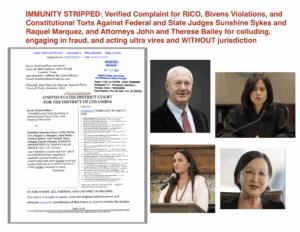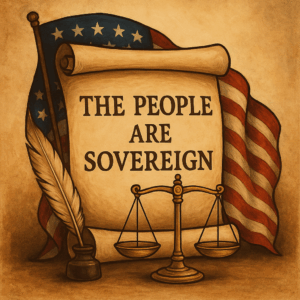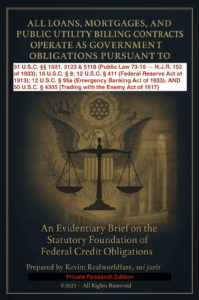1. Definition of Matrix in Law
Across multiple editions of Black’s Law Dictionary, “matrix” is consistently defined as:
- The Protocol or Original Draft: The first draft of a legal instrument, from which all subsequent copies and actions must originate.
- Authority in Legal Processes: The matrix ensures that legal proceedings remain authentic, consistent, and free from unauthorized modifications.
Cited definitions include:
- Black’s Law Dictionary (1st–6th Editions): “The protocol or first draft of a legal instrument, from which all copies must be taken.”
- Black’s Law Dictionary (7th and 8th Editions): Adds that a matrix may also refer to a list of parties in a lawsuit, including creditors and their addresses in bankruptcy cases, with court-specific rules for its preparation.
In essence, the matrix is the foundation of every legal process, ensuring procedural consistency and fairness.
2. Lawsuits as Commercial Actions
Every lawsuit, regardless of its classification (civil, criminal, or administrative), inherently operates within a commercial framework. This understanding is reinforced by:
a. Initial Complaint as the Matrix
- The original filing of a complaint or petition serves as the lawsuit’s matrix.
- It defines:
- The charges or claims made.
- The parties involved.
- The remedies or relief sought.
- All subsequent motions, amendments, or judgments trace back to the original matrix.
b. Commercial Nature of Charges
- Title 27 CFR § 72.11 defines “commercial crimes” as including all offenses involving fraud, embezzlement, theft, counterfeiting, forgery, or other dishonest conduct.
- This regulation highlights that all crimes are inherently commercial, whether civil or criminal, because they involve violations of contracts, agreements, or trust.
- Charges in lawsuits, whether monetary damages, restitution, or penalties, reflect the commercial liabilities of the parties involved.
c. Role of the Courts
- Courts function as commercial entities that adjudicate disputes involving liabilities, contracts, and obligations.
- The matrix represents the commercial framework of the lawsuit, encompassing all charges and claims arising from the matter.
3. Precedent Case: Downing v. Diaz
The case Downing v. Diaz, 80 Tex. 436, 16 S.W. 53 is cited across editions of Black’s Law Dictionary to emphasize the matrix’s legal significance:
- The original protocol or draft is the authoritative source in legal proceedings.
- All subsequent actions and filings must adhere to the original matrix to maintain authenticity and procedural fairness.
4. The Clearfield Doctrine and Commercial Lawsuits
The Clearfield Doctrine (Clearfield Trust Co. v. United States, 318 U.S. 363 (1943)) establishes that:
- When the government engages in commercial activities or uses commercial paper (e.g., checks, bonds, legal instruments), it is subject to the same rules as private corporations.
- The doctrine highlights the commercial nature of legal processes, underscoring the necessity of a clear and unambiguous matrix as the foundation of lawsuits.
In lawsuits, the Clearfield Doctrine affirms:
- The charges, claims, and liabilities in a case must originate from the original matrix.
- Courts and parties must operate transparently, adhering to the commercial framework of the case.
5. Legal Maxims Supporting the Matrix
Legal maxims further highlight the significance of the matrix:
- “Truth is expressed in the original”: The matrix represents the original truth of a legal matter.
- “Certainty is paramount in law”: The matrix provides the certainty needed for fair adjudication.
6. Procedural Doctrine: Matrix in Lawsuits
The matrix ensures procedural consistency in lawsuits by:
- Serving as the original draft of all filings, motions, and judgments.
- Ensuring that all parties and claims remain connected to the initial filing, preventing unauthorized alterations.
In bankruptcy cases, for example, the matrix includes a list of creditors and parties, ensuring notice and accountability in commercial disputes.
7. Broader Implications of the Matrix
a. Commercial Framework
- Under the Uniform Commercial Code (UCC) and related statutes, lawsuits operate as commercial actions involving liabilities, obligations, and remedies.
- The matrix ties these commercial elements together, ensuring that all claims and charges stem from a unified source.
b. Title 27 CFR § 72.11
This regulation defines all crimes as commercial, reinforcing the idea that lawsuits inherently involve commercial transactions.
c. Connection to UCC
- The UCC governs commercial transactions, including disputes arising from contracts, agreements, or liabilities.
- Lawsuits reflect these principles, with the matrix serving as the foundation of the commercial claims involved.
8. Conclusion
The concept of the “matrix” is foundational to understanding lawsuits as inherently commercial actions. It serves as the original protocol or draft, tying together all charges, claims, and related matters. Title 27 CFR § 72.11 explicitly classifies all crimes as commercial, reinforcing the commercial framework underlying legal disputes. Additionally, the Clearfield Doctrine, legal maxims, and procedural principles affirm the matrix’s central role in ensuring fairness, consistency, and authenticity in legal processes.
In every lawsuit, the matrix functions as the framework that governs the commercial liabilities, claims, and remedies of the parties involved, preserving the integrity of the legal process.




